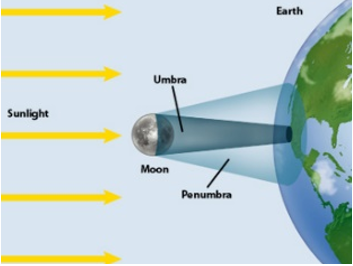Earth and the Moon
- Swift E. Creek
- Apr 6, 2018
- 3 min read
THE MOON'S MOTION
The Moon orbits Earth about 12 times per year in a nearly-circular elliptical orbit, or once per month. Much like the Earth, the Moon also rotates as it revolves. However, the Moon’s rotation is much slower than Earth’s. Its period of rotation is about once per month, which is the same as its period of revolution. This means that the same side of the Moon is always facing the Earth (we say the Moon is "tidally locked" to Earth).
MOON PHASES - different appearances of the moon throughout the month
The Moon's location relative to the Earth and the Sun changes as it revolves around the Earth. The lit part of the Moon that is visible from Earth is called a PHASE. When the Moon is between the Earth and the Sun, the lit side of the Moon is facing away from Earth, so we do not see it. This is called a “new moon”. During the first two weeks of the month, when the lit part of the Moon visible from Earth gets larger, we say that the phases are “waxing”. When the Moon is on the opposite side of Earth from the Sun, the entire side facing the Earth is lit by sunlight. We call this a “full moon”. During the last two weeks of the month, the lit portion of the Moon that is visible from Earth gets smaller. We refer to these phases as “waning”.

Moon Phases
Eclipses - when the Earth and Moon line up with the Sun during their orbits, they cast a shadow on one another
A solar eclipse can only happen during a new moon, when the Moon is between the Earth and the Sun. When this occurs, the Moon casts a shadow on Earth’s surface, blocking out the sunlight for that part of the Earth. A lunar eclipse can only happen during a full moon, when the Earth is between the Sun and the Moon. This causes the Earth to cast a shadow on the Moon.


However, eclipses do NOT occur twice each month during every new moon or full moon. This is because the Moon’s orbital plane is tilted from the Earth’s orbital plane by about 5°. If this weren’t the case, we would never see a full Moon! Because its orbit it tilted, the Moon only crosses the Earth’s orbital plane twice a month. In order for there to be an eclipse, the Moon must be in line with the Earth and Sun at the exact time that it crosses Earth’s orbital plane. This is why eclipses are so rare.

Explaining Lunar Eclipses and the Blood Moon
Tides - the daily rise and fall of sea level
Because of the Moon’s gravitational pull, the water on Earth’s surface bulges on the side of Earth facing the Moon as well as the side of Earth opposite the Moon. This means that high tides occur when we are facing the moon or when we are on the opposite side of Earth from the Moon. When our location on Earth is perpendicular to the Moon, we experience low tides.

The Sun’s gravity can affect tides as well, though it is only about half as strong as the Moon’s tidal influence. During the full moon and new moon phases, when the Sun and Moon line up with the Earth, tides become stronger because the gravitational forces are in line with one another. This causes higher high tides and lower low tides, called spring tides. When the Moon is perpendicular to the Sun and Earth during the first quarter and third quarter phases, the Sun’s gravity reduces the effect of the Moon’s gravity on tides. This causes weaker tides, lower high tides and higher low tides, called neap tides.




Comments